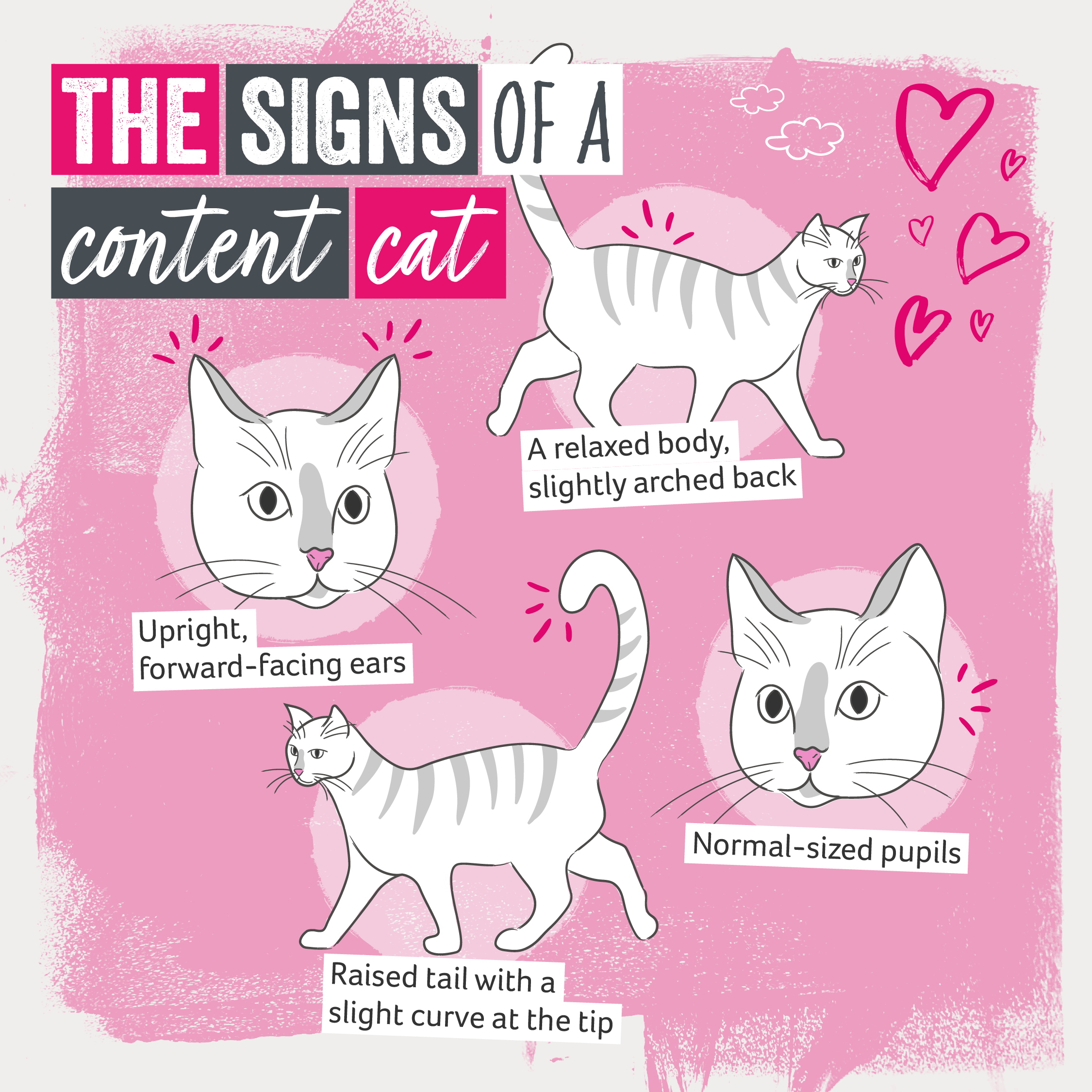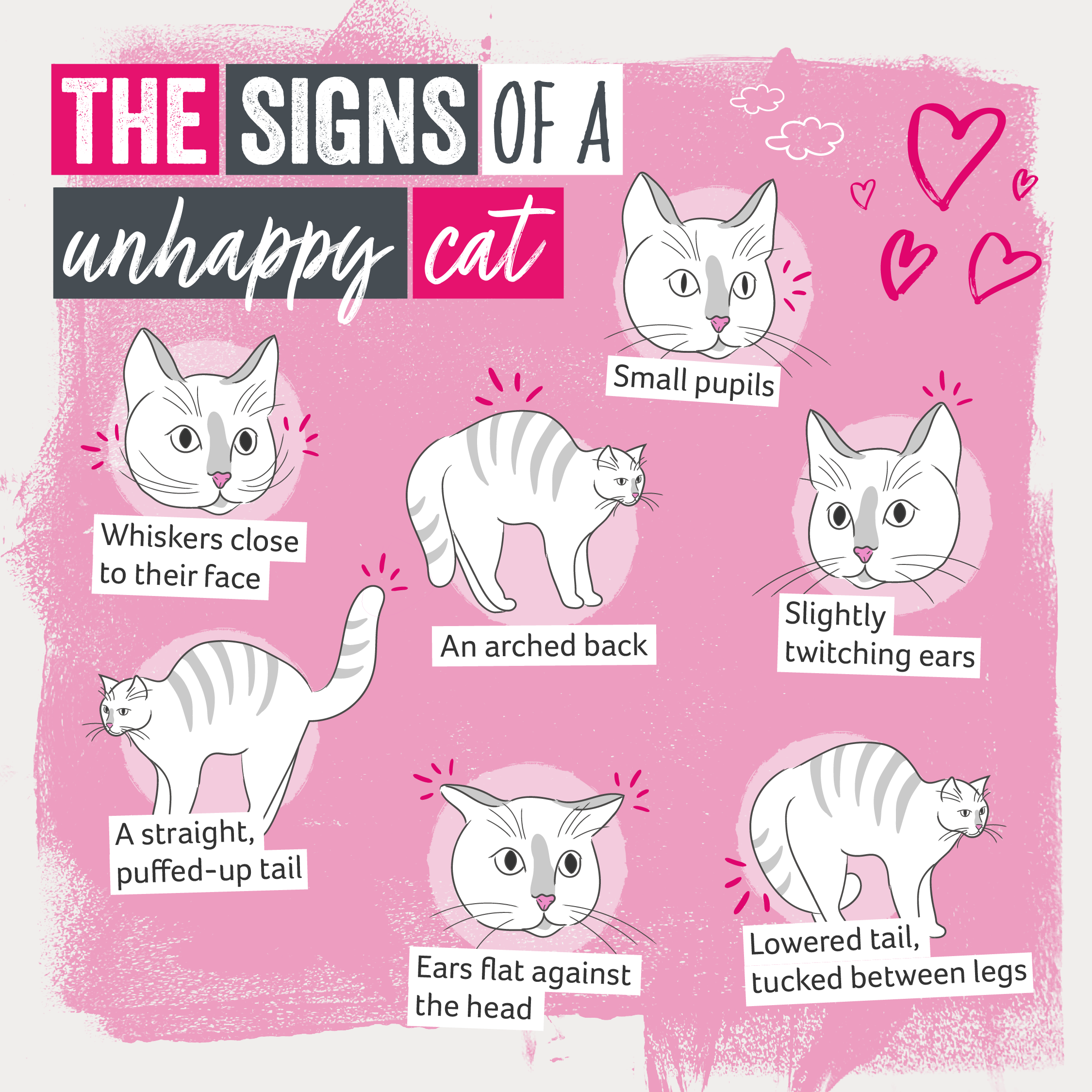30th May 2024
Understanding cat body language and vocalisations
Our mysterious and independent feline friends have fascinated humans for centuries. These enigmatic creatures communicate in unique ways, using a combination of postures and sounds. If you’re a cat owner, or have a cat that owns you, understanding their individual language is key to building a bond with them and ensuring their wellbeing.
The intriguing world of feline communication, delving into body language and decoding the meanings behind their quirks bought to you by Layla, our cat behaviour expert.
Body language
A cat's body language can be filled with subtle cues and movements, so it's not always easy to read how they're feeling. It’s important to look at their eyes, tail, mouth and posture together, to help reveal their emotions and intentions.

Tail position
The position of a cat's tail is highly expressive and handy in working out what’s what with your feline. A raised tail, sometimes with a slight curve at the tip, shows a content and friendly cat, while a straight, puffed-up tail signifies aggression or fear. A lower tail, sometimes even tucked between their legs, can be a sign of submission or anxiety.
Ears
Cats communicate through their ears as well, giving you more handy hints on how they’re feeling! Upright, forward-facing ears can suggest attentiveness, curiosity, and a desire to play. Ears flat against the head usually suggest a feline is fearful or feeling aggressive, while slightly twitching ears may signal annoyance.
Pupil size
A cat's pupils are windows to a cat’s mood and can provide vital insights into their emotional state. Dilated (enlarged) pupils indicate excitement, fear, or arousal, while smaller pupils suggest aggression or tension. A cat with normal-sized pupils will often be relaxed or content.
Body posture
A relaxed and open body posture, with a slightly arched back, can convey that a cat is calm and confident, but a hunched or crouched posture can signify fear or anxiety in your feline. A puffed-up body, often accompanied by an arched back and an expanded tail, indicates aggression.
Whiskers
Who knew a cat’s whiskers could tell us more about their mood? A fearful cat brings their whiskers close to their face to try and make itself smaller. So, if in doubt, check their whiskers!
Did you know? Confident cats might push their whiskers forward.

Vocalisations
You’ll learn a lot once you’re able to interpret your cat's wide vocabulary of chirps and meows, so here’s what your feline’s noises could mean:
Meowing
Meowing is typically directed towards humans rather than other cats. Some believe that cats have learned that they cannot communicate with us the way they do with other felines, which is why they’ve refined their language to converse with their humans.
Meowing can be used as:
- A greeting
- A command
- An objection
- An announcement
This helps our feline friends to convey a variety of messages, including hunger, a desire for attention, or a request to be let outside.
Remember: A meowing cat usually wants something.
Purring
Purring is often associated with contentment, relaxation, and pleasure. Many people believe that a purring cat is happy. However, our feline friends may also purr when they are anxious, in pain, or are feeling unwell, as purring can have a soothing effect on their bodies.
Hissing
Hissing might be the easiest vocalisation to decipher as it’s a clear sign of aggression or fear. When a cat hisses, they are warning potential threats to stay away. If this happens, it’s important to give your cat space.
Chirping and trilling
Chirping and trilling are unique vocalisations that cats use to communicate with their young or to express excitement (and sometimes even frustration). These sounds are often observed when a cat spots a bird or small animal outside the window that they’re unable to reach.
If your cat starts to trill at you, they might be feeling friendly and familial.
Yowling
Yowling is a loud and drawn-out vocalisation that cats use to communicate distress, pain, or mating behaviours. You’ll often hear a yowl after a hiss, making sure you know that it’s time to leave your cat alone.
Remember: If a cat's yowling seems unusual or excessive, make sure you speak to your vet.
Other behaviours
There are other behaviours that can help you decipher your cat’s mood.
Rubbing
If your cat rubs their face or chin against you (or even your furniture, doors, and other belongings), they’re probably marking their territory. This can happen if there’s a new cat on the block, or they’re unsure of any visitors you might have.
Kneading
Cats often knead while being stroked or when trying to create a napping spot. It’s likely a behaviour they’ve learnt from nursing, as young cats had to knead their mother’s teats to help make milk flow. Cats tend to do this when they’re happy, although a stressed cat may knead to create a calmer mood.
While it might seem like a lot to learn, by paying close attention to your cat’s tail position, ear movement, pupil size, body posture, and vocalisations, you can gain valuable insights into their world and how they’re feeling. Understanding their language will allow you to respond to their needs and helping strengthen the bond between you.
Looking for more cat advice?
We’ve written some handy cat advice guides, to help you unlock the secrets of your mysterious moggy.
Need cat insurance?
Cat insurance can help cover the cost of veterinary treatment if your cat gets injured or falls ill.
We know pets
Our pets are part of the family. To achieve our vision of a better future for pets everywhere, we work with our partners, vets, and other veterinary professionals who are pioneering the latest advancements in animal care. Our campaigns, articles, and events are crafted to support, educate, and celebrate pet owners, while our policies are designed to provide peace of mind at an affordable price.
Yet our policies don’t just protect against the unexpected – they have purpose, too.
Since we were founded over 25 years ago, we've provided industry-leading policies that protect the nation’s pets, while also making a difference to animal welfare and our planet. Thanks to you, our policyholders, we've donated over £9 million to more than 830 animal welfare charities and conservancies, helping to support vulnerable pets and wildlife around the world.
We’re proud to be wildly different. Are you?
